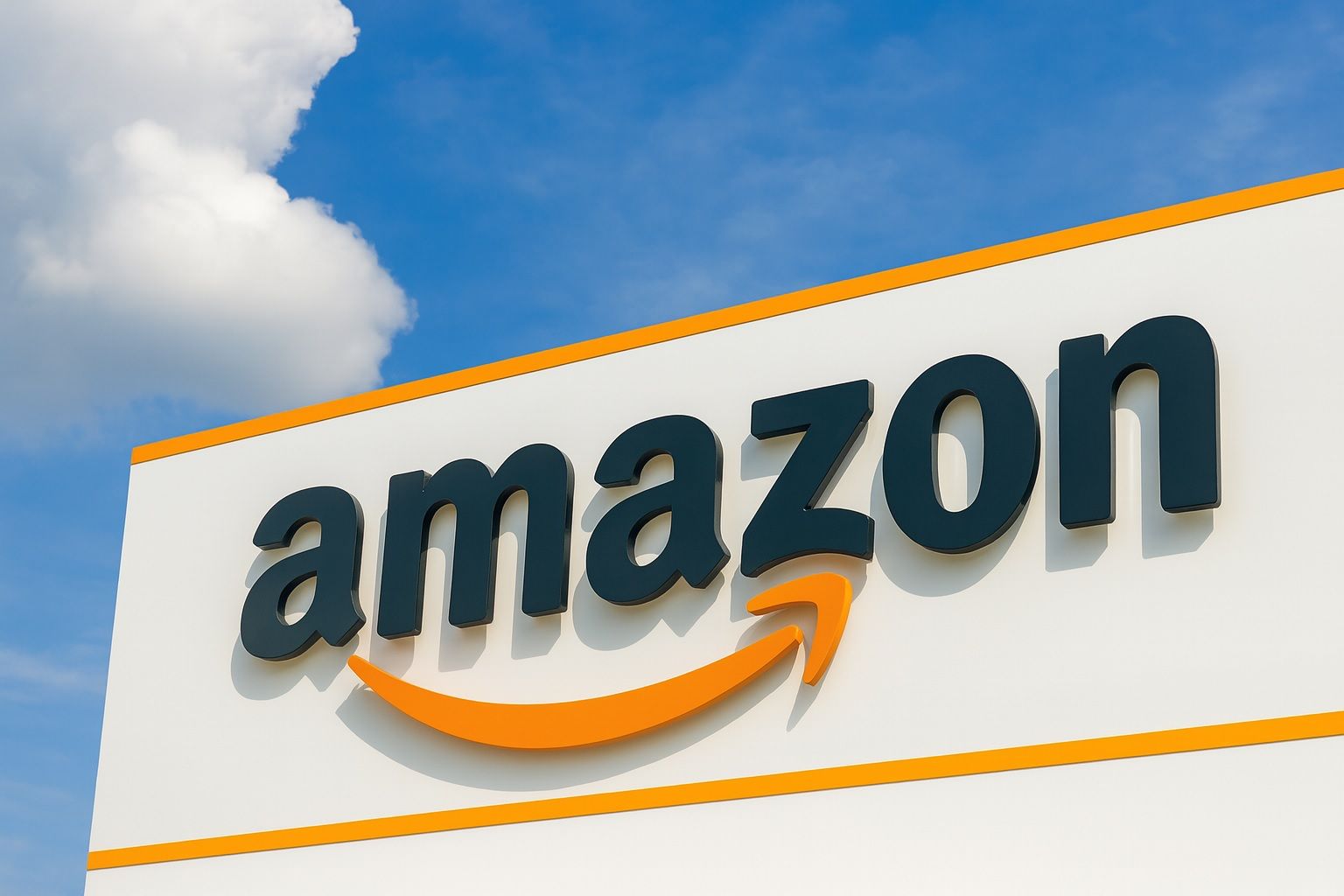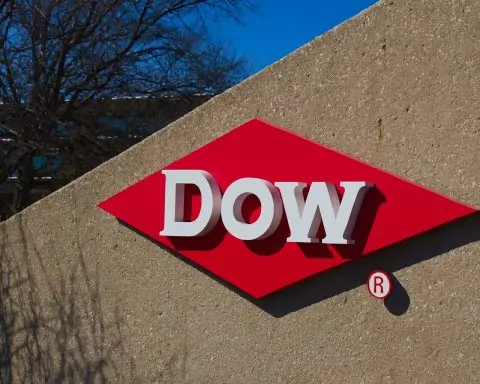- Massive Layoffs Planned: Amazon will cut as many as 30,000 corporate jobs – roughly 10% of its office workforce – starting on Tuesday [1]. This is poised to be Amazon’s largest-ever round of layoffs, surpassing the ~27,000 jobs slashed in 2022–23 [2].
- Overhiring & AI Drive: The cuts aim to trim costs after pandemic overhiring and boost efficiency. CEO Andy Jassy has warned that as Amazon rolls out more AI and automation, “we will need fewer people doing some of the jobs that are being done today,” predicting “this [AI efficiency] will reduce our total corporate workforce” [3]. An eMarketer analyst said the move shows Amazon is gaining “AI-driven productivity” that supports a “substantial reduction in force,” while needing to offset hefty investments in AI infrastructure [4].
- Multiple Divisions Hit: The layoffs will span many divisions, including human resources (the People Experience & Technology or PXT unit), devices, services, operations and others [5]. Earlier reports indicated the HR department alone could see a ~15% staff cut (PXT has ~10,000 employees, implying ~1,500 HR jobs) [6] [7]. Managers were reportedly trained on Monday to handle the notifications, which start going out via email Tuesday morning [8].
- Stock Market Reaction: Investors appear to welcome Amazon’s belt-tightening. Amazon’s stock rose about 1.3% Monday, closing near $227 [9] after the news broke, and was flat in after-hours trading [10]. Wall Street remains bullish: 45 of 46 analysts rate AMZN a “Buy,” with a consensus 12-month price target around $264 (~15% above current levels) [11]. Many analysts have recently raised their targets, and some bullish investors even suggest Amazon could reach a $3 trillion valuation (~$300+/share) in a few years if it executes well [12].
- Big Picture: Amazon’s cuts come amid a broader wave of pre-holiday corporate belt-tightening. Target is reportedly cutting 1,000 corporate roles this week as well [13], and layoff trackers report nearly 98,000 tech jobs lost so far in 2025 [14]. This comes despite a strong economy and stock market highs – indicating even booming companies are pruning costs ahead of an uncertain economic outlook [15]. Amazon itself is simultaneously hiring 250,000 seasonal warehouse workers for the holidays [16], highlighting that front-line operations remain staffed even as white-collar roles are trimmed.
Amazon’s Largest-Ever Job Cut: 30,000 Roles to Go
In a startling cost-cutting move, Amazon is poised to eliminate up to 30,000 corporate jobs starting Tuesday (Oct. 28) [17]. That figure represents nearly 10% of Amazon’s roughly 350,000 corporate employees and marks the biggest layoff in the company’s history [18]. For comparison, Amazon’s previous major downsizing in late 2022 and early 2023 totaled about 27,000 job cuts [19]. The latest cuts – reported by Reuters and confirmed by other outlets – underscore how dramatically Amazon is moving to streamline its business after years of rapid workforce expansion.
Amazon has not officially commented on the reports of the layoffs [20]. However, three people familiar with the plan told Reuters that the company will begin informing affected employees via email on Tuesday morning [21]. Managers of teams slated for cuts were even instructed to undergo training on Monday on how to communicate the news to staff [22] – a sign that Amazon is handling this delicately given the scale. The layoffs will reportedly roll out across Amazon’s corporate offices globally, constituting what appears to be a sweeping, company-wide downsizing.
CEO Andy Jassy has been telegraphing a need for greater efficiency for months. He has spoken openly about reducing what he calls excess bureaucracy and management layers inside Amazon [23]. In fact, Jassy set up an anonymous internal tip line for employees to flag inefficiencies, yielding some 1,500 suggestions and over 450 process fixes so far [24]. The broader goal, according to Jassy, is to “right-size” Amazon’s cost structure after the company’s headcount ballooned during the pandemic e-commerce boom. Amazon’s total workforce swelled as the company over-hired during the peak demand of the pandemic and is now looking to “pare expenses” and unwind that growth [25].
Overhiring Hangover Meets the AI Era
One major factor behind these cuts is the overlap of Amazon’s pandemic-era hiring hangover with a new era of AI-driven automation. During 2020-2021, Amazon hired hundreds of thousands of people to keep up with surging online shopping. Now, demand growth has normalized, and Amazon finds itself with more corporate staff than needed in certain areas. Jassy is essentially acknowledging that reality – and leveraging technology to address it.
In a June memo to employees, Jassy explicitly warned that advances in generative AI and automation will allow Amazon to operate with fewer workers. As Amazon deploys more AI tools, “we will need fewer people doing some of the jobs that are being done today” and “we expect that this will reduce our total corporate workforce,” Jassy wrote [26]. In other words, roles that involve repetitive or routine tasks may increasingly be handled by algorithms and software, not people [27]. At Amazon’s scale, even small productivity gains per employee can translate into thousands of roles becoming redundant.
Outside experts see the same trend. “This latest move signals that Amazon is likely realizing enough AI-driven productivity gains within corporate teams to support a substantial reduction in force,” observed Sky Canaves, an analyst at Insider Intelligence’s eMarketer [28]. She added that “Amazon has also been under pressure in the short-term to offset the long-term investments in building out its AI infrastructure” [29]. In recent years Amazon has poured billions into AI development (from AWS data centers to Alexa and beyond), and investors are now looking for the company to keep expenses in check as those big investments ramp up.
Indeed, Amazon’s push to automate and tighten its belt is part of a broader wave across Big Tech. “AI is progressing so fast in improving productivity that the need for hiring will diminish over time,” notes Gil Luria, a tech analyst at D.A. Davidson [30]. Amazon’s own layoffs in 2022–23 were an early step to “right-size” the organization, and this new round appears to be the “next phase” of that effort to run leaner [31]. By freeing up headcount and costs now, Amazon can reallocate resources to high-growth areas like cloud computing and generative AI projects, which Jassy views as critical to the company’s future [32]. In fact, Jassy has indicated Amazon plans to spend over $100 billion in 2025 on fulfillment and data centers – largely for AI and cloud infrastructure – so trimming labor expenses helps make those ambitious investments more palatable [33].
Multiple Divisions in Crosshairs – But Frontline Jobs Spared
Unlike some past Amazon layoffs that focused on a single business unit, this round is broad in scope, affecting a range of corporate divisions. According to insiders, teams in human resources, especially the People Experience and Technology (PXT) department, are heavily impacted [34]. (The PXT group, which handles hiring and HR tech, has over 10,000 employees worldwide – reports suggest roughly 15% of that staff may be cut [35] [36].) This aligns with early October leaks first reported by Fortune that Amazon was eyeing deep cuts in its HR department – essentially the corporate recruiters and personnel managers who were extremely busy during the pandemic hiring spree, but are less in demand now.
Other divisions expected to see layoffs include Amazon’s Devices & Services organization (which builds consumer gadgets like Echo/Alexa, and related services) and parts of Operations and logistics support [37]. Even some roles in Amazon Web Services (AWS), the profitable cloud unit, were quietly trimmed earlier this year, and additional AWS corporate roles could be on the table as Amazon reassesses resources [38]. In sum, the cuts appear to span many departments – “almost every business,” as one source put it – rather than coming from one troubled project. This suggests Amazon’s aim is a general reduction of managerial and back-office headcount across the company.
Importantly, these corporate layoffs do not touch Amazon’s vast hourly workforce in warehouses, delivery, and retail operations. In fact, in a somewhat paradoxical twist, Amazon is currently in the process of hiring 250,000 seasonal warehouse and logistics workers to meet surging holiday demand, matching its hiring levels from the previous two holiday seasons [39]. These temporary jobs – in fulfillment centers and delivery hubs – underscore that Amazon still needs plenty of hands to pick, pack and ship gifts for the holidays. The front-line roles remain safe; it’s the white-collar and tech roles behind the scenes that are being trimmed. Amazon appears to be drawing a sharp distinction between customer-facing operational capacity, which it is maintaining or even expanding, and corporate overhead, which is being aggressively streamlined.
Amazon also just enacted wage hikes for its frontline personnel, investing $1 billion to raise average warehouse pay above $30/hour [40]. This shows the company is willing to spend on areas that drive revenue and customer satisfaction, even as it cuts roles that are more indirectly tied to those goals. The message from Jassy is clear: Amazon will run “lean and mean” at the corporate level so that it can continue to invest in growth initiatives and its critical hourly workforce.
Wall Street’s Take – Stock Stable and Optimistic Outlook
Thus far, investors have reacted calmly – even positively – to news of Amazon’s mass layoffs. Amazon’s stock (NASDAQ: AMZN) ticked up about 1.3% on Monday to close around $227 per share [41], near its highest levels of the year. The modest rally signals that Wall Street views the cost cuts as a prudent step that could bolster Amazon’s profitability. In after-hours trading, Amazon shares were little changed [42], indicating no panic over potential disruption to the business. If anything, the market often interprets large-scale layoffs at a tech giant as a sign of financial discipline – management is willing to make tough choices to protect margins.
Those margins have already been improving. In the second quarter of 2025, Amazon’s operating profit margin hit roughly 13%, a multi-year high, thanks in part to earlier restructuring and efficiency gains [43]. Trimming thousands of additional jobs will further lighten the expense load. “Investors have accepted this trade-off,” the TechStock² analyst team noted, referring to Amazon’s decision to cut staff while plowing savings into AI and infrastructure – because it’s visibly “boosting profitability” [44]. In short, Wall Street likes what it sees: a leaner Amazon with fatter profit margins.
Market analysts remain overwhelmingly bullish on Amazon’s stock looking ahead. Virtually every major analyst covering the company has a buy rating in place – about 45 out of 46 analysts tracked have Amazon as a “Buy” [45]. The average 12-month price target is roughly $264 per share [46], implying significant upside from current levels. Many banks have actually raised their targets into the mid-$250s recently, especially after Amazon’s strong Q2 results and optimistic forecasts for the holiday quarter [47]. Some particularly optimistic investors even argue Amazon could reach a $3 trillion market capitalization within a couple of years (which would mean a stock price around $300+ per share) if its growth in areas like cloud and AI continues apace [48]. While that is on the bullish end of the spectrum, it underlines the confidence many have in Amazon’s long-term trajectory.
In the near term, all eyes will be on Amazon’s third-quarter earnings report due this Thursday. The company’s Q3 results (covering July–September) will give more insight into its momentum and may include commentary from Andy Jassy on these layoffs and broader strategy. Amazon had guided for strong double-digit revenue growth in Q3, around 10–13% year-over-year [49], and analysts expect solid margins as well. Any upside surprise – for example, if Amazon’s cloud business (AWS) accelerates growth or if cost controls noticeably improve profits – could give the stock an extra boost. Conversely, investors will listen for any cautious notes about the crucial holiday quarter or economic headwinds. So far, though, signs point to a robust holiday season: Amazon’s October “Prime Big Deal Days” sales event was reportedly successful, and U.S. consumer spending remains healthy.
Wider Industry Context – Belt-Tightening Despite Boom Times
Amazon is far from the only big company cutting back right now. These layoffs arrive amid what some are calling a late-2025 belt-tightening trend in corporate America – even as the broader economy and markets are strong. For instance, Target is said to be eliminating about 1,000 corporate jobs this week as well [50], aiming to reduce costs heading into 2026. And according to Bloomberg, Hollywood studios like Paramount’s Skydance Media are considering staff cuts too [51]. It’s a somewhat perplexing scenario: the stock market recently notched record highs, and U.S. GDP growth has been surprisingly robust, yet big employers are quietly trimming payrolls ahead of the holidays [52].
In the tech sector specifically, layoffs have been a recurring theme since 2022’s downturn. While 2023 saw the brunt of Big Tech layoffs, 2025 has also seen substantial cuts. Layoffs.fyi, a site tracking tech redundancies, estimates about 98,000 tech jobs have been cut in 2025 so far across more than 200 companies [53]. (By comparison, around 153,000 tech jobs were lost in all of 2024 [54], so this year’s pace is slightly lower but still significant.) Companies from Intel (which is slashing around 33,000 roles amid a restructuring) to Microsoft (~19,000 roles) and Salesforce(~5,000) have all announced major staff reductions in 2025 [55]. Many of these cuts, like Amazon’s, are tied to the adoption of AI or other efficiency drives – suggesting that as technology improves, firms are reevaluating their staffing needs.
For Amazon employees, the coming days will undoubtedly be difficult as the company executes this massive layoff. But for Amazon as a business, the downsizing reflects a strategic pivot to prioritize automation, efficiency, and long-term growth over sheer headcount. Amazon is often regarded as a bellwether for the tech industry and the broader corporate world. Its decision to cut 30,000 jobs – even while the economy is growing – could signal to other companies that it’s time to tighten belts and boost productivity wherever possible, preparing for whatever economic conditions lie ahead.
Bottom Line: Amazon’s plan to axe 30,000 corporate jobs is a landmark moment for the e-commerce and cloud titan. It highlights how post-pandemic reality and the rise of AI are reshaping the workforce at even the most successful companies. While thousands of Amazonians face uncertainty, Wall Street is applauding Amazon’s discipline – betting that a leaner, AI-empowered Amazon will be more profitable. As the holiday season approaches and Amazon gears up its warehouses with quarter-million seasonal workers, the company is sending a clear message that it can “do more with less” at the corporate level. Investors, for now, are on board – and will be watching closely to see if this tough medicine translates into continued growth and stock gains in the months ahead.
Sources: Reuters [56] [57] [58]; CNBC [59]; Axios [60] [61]; TechStock² (TS2) analysis [62] [63] [64]; Fortune via Reuters [65].
References
1. www.reuters.com, 2. www.reuters.com, 3. ts2.tech, 4. www.reuters.com, 5. www.reuters.com, 6. www.reuters.com, 7. ts2.tech, 8. www.reuters.com, 9. www.reuters.com, 10. www.axios.com, 11. ts2.tech, 12. ts2.tech, 13. www.axios.com, 14. www.reuters.com, 15. www.axios.com, 16. www.reuters.com, 17. www.reuters.com, 18. www.reuters.com, 19. www.reuters.com, 20. www.reuters.com, 21. www.reuters.com, 22. www.reuters.com, 23. www.reuters.com, 24. www.reuters.com, 25. www.reuters.com, 26. ts2.tech, 27. www.reuters.com, 28. www.reuters.com, 29. www.reuters.com, 30. ts2.tech, 31. ts2.tech, 32. ts2.tech, 33. ts2.tech, 34. www.reuters.com, 35. www.reuters.com, 36. ts2.tech, 37. www.reuters.com, 38. ts2.tech, 39. www.reuters.com, 40. ts2.tech, 41. www.reuters.com, 42. www.axios.com, 43. ts2.tech, 44. ts2.tech, 45. ts2.tech, 46. ts2.tech, 47. ts2.tech, 48. ts2.tech, 49. ts2.tech, 50. www.axios.com, 51. www.axios.com, 52. www.axios.com, 53. www.reuters.com, 54. www.reuters.com, 55. ts2.tech, 56. www.reuters.com, 57. www.reuters.com, 58. www.reuters.com, 59. www.axios.com, 60. www.axios.com, 61. www.axios.com, 62. ts2.tech, 63. ts2.tech, 64. ts2.tech, 65. www.reuters.com










